Is Kuari Pass Trek difficult?
Published on August 23, 2025
The Kuari Pass trek is one of the most popular Himalayan treks, especially for beginners who want to experience high-altitude trekking. The trail goes up to nearly 12,500 ft and rewards trekkers with breathtaking views of peaks like Nanda Devi, Kamet, and Dronagiri. A common question is whether the Kuari Pass trek is very difficult. The answer is that it is a moderate-level trek. You don’t need advanced mountaineering skills, but you should be fit enough to walk for long hours, handle steep climbs, and adjust to cold mountain weather.
For first-time trekkers, it is quite doable with basic fitness preparation. Walking, jogging, and simple exercises for a few weeks before the trek will make the journey more comfortable. Having the right trekking shoes, warm clothes, and a determined mindset is also important. With this preparation, most trekkers can complete the trek without major challenges.
Many travelers also prefer a Kuari Pass trek package from Delhi, as it includes transport, stay, food, and guides, making the entire trip hassle-free. Such packages allow you to focus only on the experience, while everything else is well taken care of.
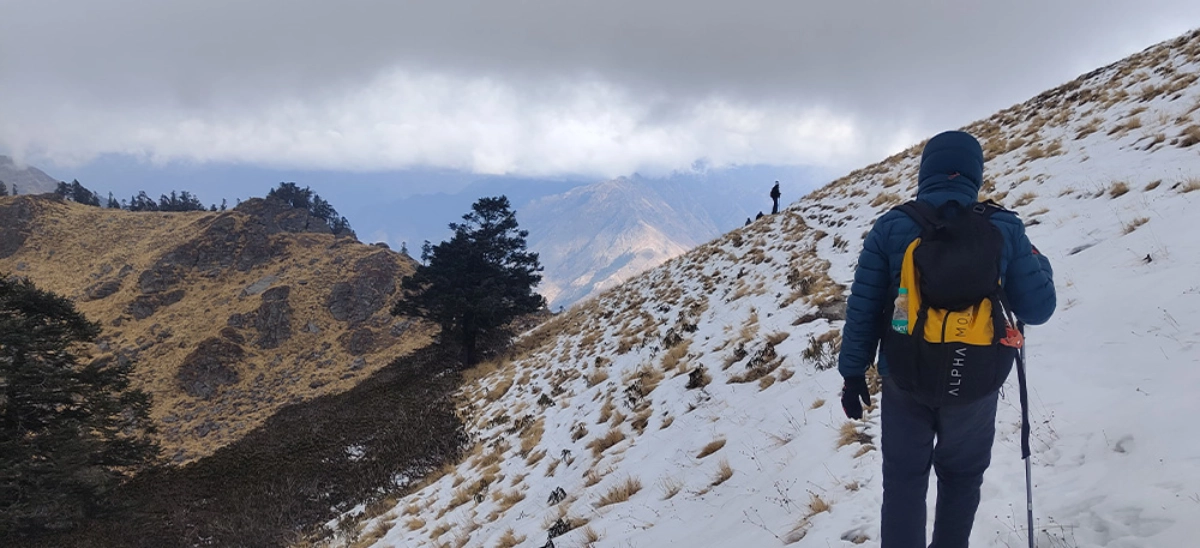
Kuari Pass Trek Itinerary – Complete Day-Wise Guide
DAY 0: Delhi → Joshimath (Overnight Drive)
-
Evening departure from Botanical Garden, Noida
-
Overnight journey via Haridwar, Rishikesh, Devprayag, Rudraprayag
-
Scenic mountain roads from Rishikesh to Joshimath
-
Distance: ~500 km | Travel Time: 12–14 hours
DAY 1: Arrive at Joshimath → Drive to Dhak → Trek to Guling
-
Arrive in Joshimath by morning, freshen up, and have breakfast
-
Drive to Dhak Village – the trek starting point
-
From Dhak, you will be on trekking through steep ridges and sparse forests
-
Trail offers panoramic views of the Hathi-Ghoda peaks
-
Reach Guling Campsite by afternoon
-
Trek Distance: ~5 km | Altitude: ~9,800 ft
-
Stay: Tents at Guling
DAY 2: Guling → Trek to Tali Campsite
-
After breakfast, you will be on trekking through beautiful oak and rhododendron forests
-
Cross scenic sections like Chitrakantha ridge
-
Clear weather reveals first glimpses of Mt. Dronagiri and Nanda Devi
-
Reach Tali Campsite, a serene high-altitude camping spot
-
Trek Distance: ~5–6 km | Altitude: ~11,000 ft
-
Stay: Tents at Tali
DAY 3: Tali → Kauri Pass Summit → Return to Tali
-
Early start today for the most scenic day
-
You will be on trekking to Kauri Pass summit (12,516 ft)
-
Uninterrupted views of Nanda Devi, Dronagiri, Neelkanth, Chaukhamba
-
Spend quality time at the top and descend back to Tali
-
Trek Distance (round trip): ~10 km
-
Stay: Tents at Tali
DAY 4: Tali → Trek to Dhak → Drive to Joshimath
-
Final descent begins after breakfast
-
You will be on trekking back to Dhak via Guling
-
The downhill path retraces earlier forest trails
-
Short drive from Dhak to Joshimath
-
Free evening to explore the local bazaar or relax
-
Stay: Guesthouse/Hotel at Joshimath
DAY 5: Joshimath → Delhi (Drive Back)
-
Early morning departure by vehicle
-
Drive along the Alaknanda River valley
-
Reach Delhi by late evening/night
-
Distance: ~500 km | Travel Time: 12–14 hours
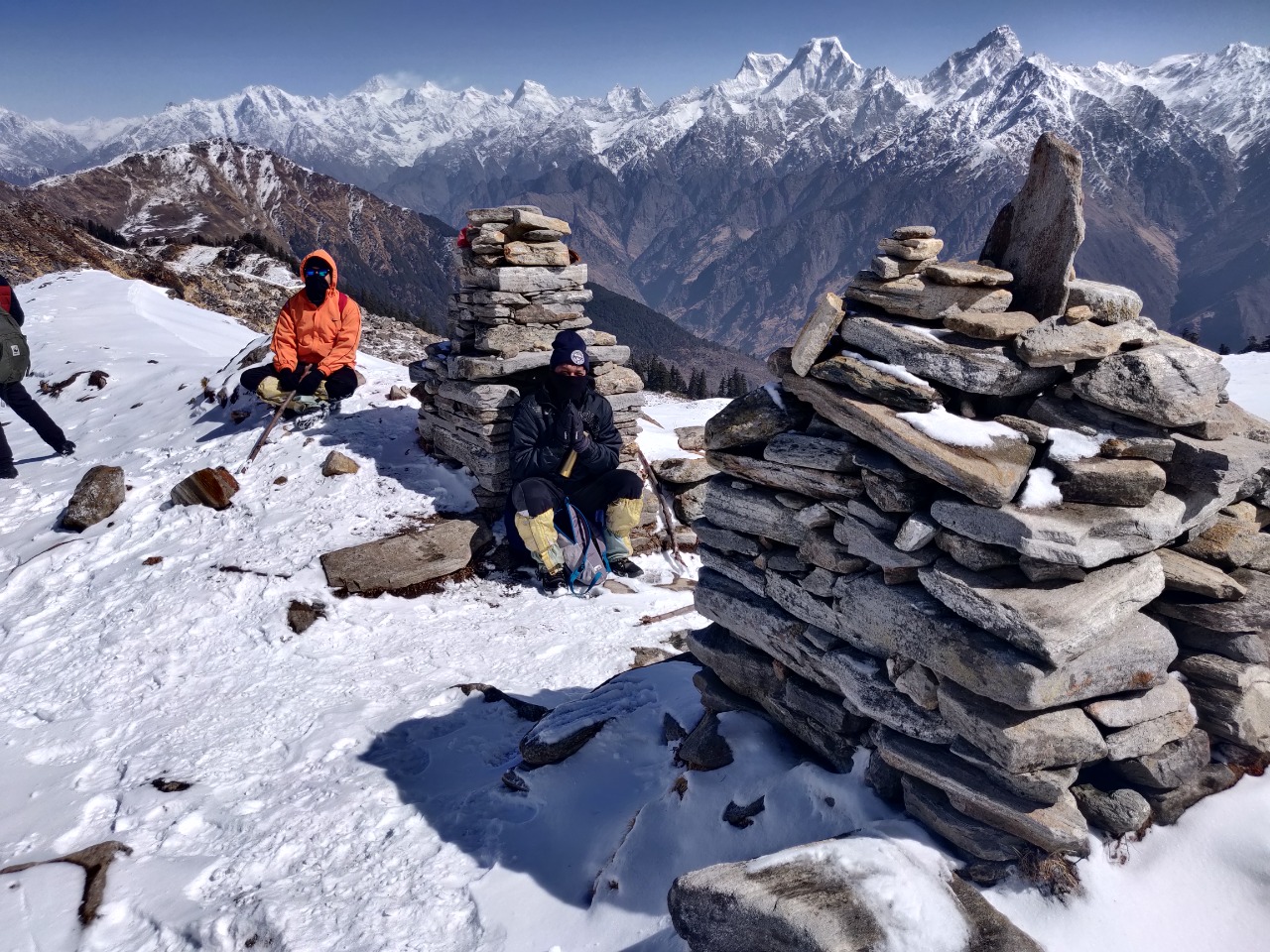
How to Reach Kuari Pass – Detailed Travel Route
The Kuari Pass trek is a popular Himalayan adventure, offering breathtaking views of peaks like Nanda Devi, Kamet, and Dronagiri. For trekkers booking a Kuari Pass trek package from Delhi, the journey is fully organized with transport, accommodation, and experienced guides.
Step 1: Delhi to Haridwar / Rishikesh
-
Distance: ~220 km (~5–6 hours by road)
-
Travel Options: Private taxi or train
-
Purpose: Rest stop and opportunity to gather trekking essentials before heading into the mountains
Step 2: Road Journey to Trek Base
-
Distance: ~350 km (~10–12 hours by road)
-
Route: Via NH 7 and NH 58 through scenic valleys and rivers
-
Highlights: Devprayag, Rudraprayag, and Chamoli for river and Himalayan views
-
Base Camp Option: Trekkers can begin the Kuari Pass trek from Joshimath, the most popular starting point
Step 3: Alternative Trek Start
For multi-day adventure packages, some travelers choose the Kuari Pass trek from Rishikesh, which combines road travel with guided trekking stages and nearby attractions before reaching the base camp.
Step 4: Trek Base to Kuari Pass Summit
-
Base Camp: Dhak or Tapovan
-
Trek Distance: 12–14 km one way
-
Route Details:
-
Walk through deodar and pine forests
-
Cross alpine meadows like Gorson Bugyal
-
Gradually climb to the Kuari Pass summit for panoramic Himalayan views
-
Step 5: Return Journey
-
Trek back to base camp
-
Road transport to Haridwar / Rishikesh
-
Drop at Delhi
Travel Tips
-
Start early from Delhi to avoid traffic
-
Carry water, snacks, and warm clothing for the trek
-
Choose packages that include meals, accommodation, and trained guides
This route ensures a smooth and organized journey, whether starting from Joshimath or Rishikesh, letting trekkers focus entirely on the adventure and scenic beauty.
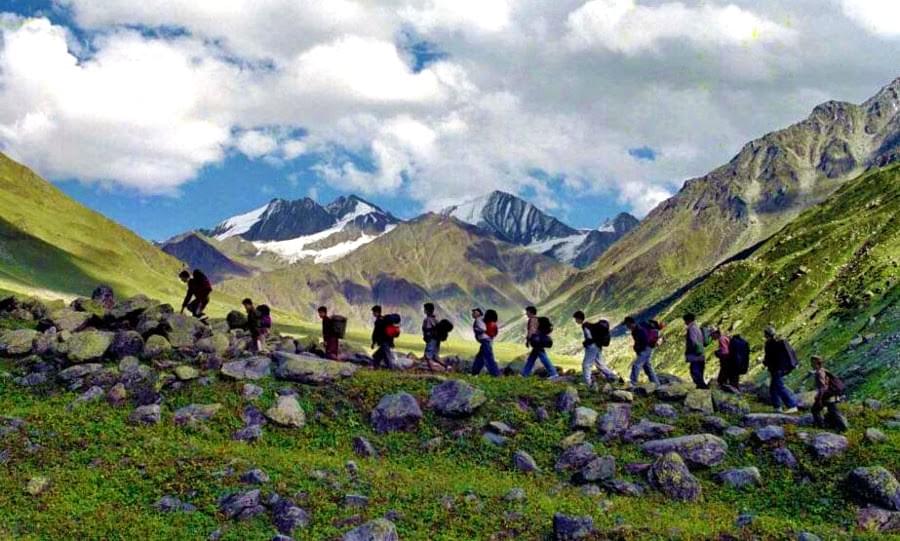
Seasonal Weather & Temperature Overview
Understanding the weather is key to planning your Kuari Pass trek. The mountains experience four distinct seasons, and each offers a unique trekking experience. Knowing the typical temperatures and conditions will help you choose the Kuari Pass trek best time for you.
Summer (May - June): Summer is a popular time for this trek. The weather is very pleasant and comfortable.
-
Temperature: During the day, the temperature ranges from 15°C to 25°C. Nights are cool, with temperatures dropping to 5°C to 10°C.
-
Conditions: The skies are generally clear, providing excellent visibility for the grand Himalayan views. The trails are free of snow, making the trek easier and safer.
Monsoon (July - August): This is not a popular time for trekking in the region due to heavy rains.
-
Temperature: Temperatures are mild, similar to summer, but the weather is unpredictable.
-
Conditions: The trails become slippery and difficult to navigate. The mountains are often covered in thick clouds and fog, which can block the stunning views.
Autumn (September - November): Autumn is considered the best time to visit.
-
Temperature: The days are cool and comfortable, with temperatures between 10°C and 20°C. The nights can get quite cold, dropping to 0°C to 5°C.
-
Conditions: The air is crisp and clean, and the skies are a clear blue, offering the most spectacular views of the snow-capped peaks. The forests take on beautiful autumn colors.
Winter (December - March): Winter is for a snow-trekking adventure.
-
Temperature: This is the coldest time of the year. Daytime temperatures range from -5°C to 5°C, and nights can be freezing, often dropping to -10°C or lower.
-
Conditions: The trail is covered in snow, turning the landscape into a white wonderland. The Kuari Pass trek distance feels longer and more challenging in the snow, but the silent, frozen beauty is an unforgettable experience. This requires proper winter gear and experience.
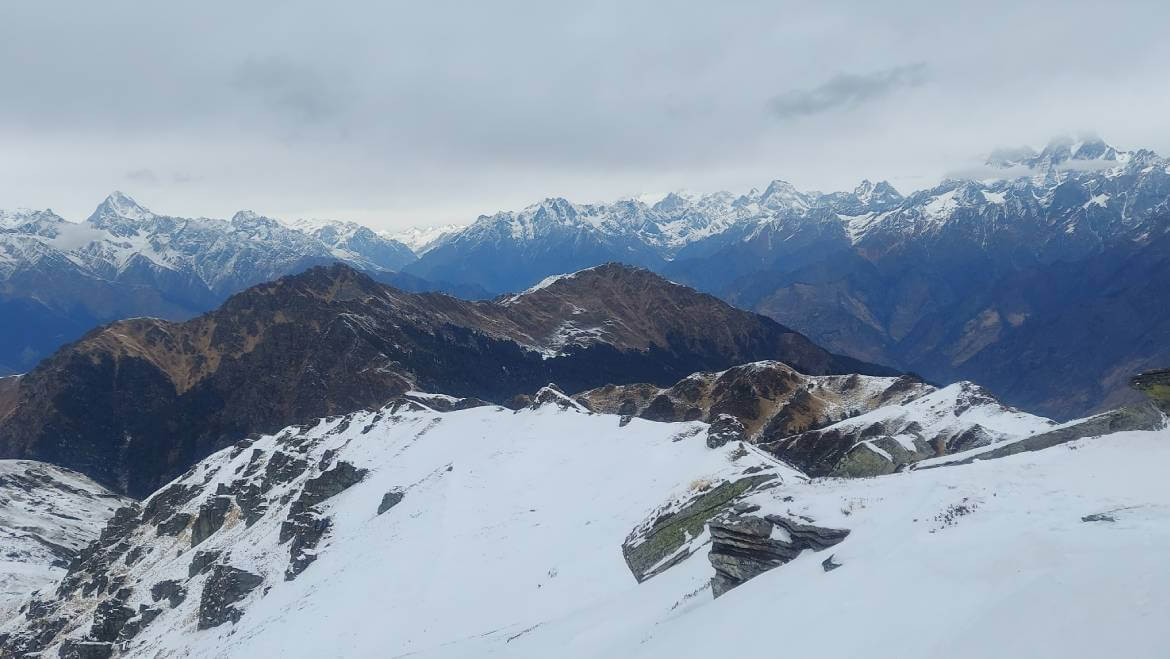
Kuari Pass Trek: A Journey Through Himalayan Wonders
The Kuari Pass trek is a fantastic adventure that takes you through some of the most beautiful places in the Garhwal Himalayas. The journey is a mix of enchanting forests, vast meadows, and spectacular views of snow-covered peaks, offering a full Himalayan experience.
Auli Meadows Auli is known for its wide, snow-covered slopes and well-maintained ski grounds, which are perfect for winter sports. The meadows here offer stunning panoramic views of the surrounding mountains and are often the starting point for the trek.
Gorson Bugyal This is a highlight of the trek. Gorson is an expansive alpine meadow that provides a breathtaking, 360-degree view of the Himalayas. It is a vast, rolling grassland that looks like a lush green carpet in summer and a white wonderland in winter.
Kauri Pass Summit The main goal of the trek is the Kauri Pass Summit itself. This is a majestic vantage point that gives you a clear view of some of the most famous peaks, including Nanda Devi, Hathi-Ghoda, and Dronagiri.
Chitrakantha Forest As you walk, you enter the enchanting Chitrakantha Forest. The trail here is filled with vibrant flora and is surrounded by beautiful oak and rhododendron trees.
Tali Lake This is a serene high-altitude lake nestled right beneath the forest ridges. It is a peaceful spot and often a campsite, where the quiet water reflects the surrounding natural beauty.
Dhak Village Dhak is a traditional Garhwali village and serves as a starting point for the trek. It gives you a great look into the local culture before you head into the wilderness.
Joshimath Town Joshimath is an important town that serves as the gateway to multiple Himalayan pilgrimages and treks. It's the last major town before your adventure begins.
Views of Nanda Devi Sanctuary From the trail, you get a rare and special perspective into the inner parts of the Garhwal Himalayas, with amazing views of the Nanda Devi Sanctuary.
Sunrise and Sunset Over Snow Peaks The trek offers spectacular golden-hour scenes, where you can watch the sun rise and set, painting the snow peaks in beautiful colors.

Accommodation Options: A Guide to Your Stay on the Kuari Pass Trek
When you book a Kuari Pass trek package, the accommodation is usually a mix of different options that provide a comfortable stay while keeping you close to nature. The type of lodging can vary depending on where you are on the trek.
-
Camps: Camping is the most common form of accommodation on the trail itself. Trekking companies provide high-quality tents, often on a twin or triple-sharing basis. These campsites are set up in scenic locations like Khullara and Tali Lake, allowing you to sleep under the stars with breathtaking views of the Himalayan peaks. All the necessary gear, like sleeping bags and mats, is provided, ensuring you are warm and comfortable even in cold weather.
-
Homestays: In some villages near the starting or ending points of the trek, such as Joshimath or Dhak, you may get the chance to stay in a homestay. This is a wonderful opportunity to experience the local Garhwali culture and hospitality. Staying with a local family gives you a unique insight into their daily life and traditions, and you get to enjoy delicious home-cooked meals.
-
Guesthouses: At the base camps or in towns like Joshimath, many trekking packages include a stay in a guesthouse. These are simple but comfortable places to rest before or after the trek. Guesthouses provide a good night's sleep in a proper bed and often have basic amenities, allowing you to relax and prepare for the adventure ahead or recover from your journey.
This blend of guesthouses and camps is designed to give you the best of both worlds: a bit of comfort at the start and end, and a true outdoor experience in the middle of your Kuari Pass adventure.

Budget-Friendly Kuari Pass Trek – Under ₹12,500
A Kuari pass tour price that is under ₹12,500 is a fantastic and affordable way to experience a high-altitude Himalayan trek. This budget-friendly option is designed to give you a full adventure without a high cost, making it perfect for students, friends, and solo travelers. This price range typically covers all the main things you need for a great trip, from start to finish.
What to Expect at This Price:
-
Transport: Your package will likely include shared transportation from a central meeting point like Dehradun or Rishikesh to the base village of the trek and back. This keeps costs low while still providing a safe and convenient way to travel.
-
Meals: Daily breakfast and dinner are included during the trek. The food is usually simple but healthy, with items like parathas for breakfast and dal, rice, and chapati for dinner, which provides the energy you need for the walk. Snacks and extra items might need to be bought separately.
-
Accommodation: The stay will be a mix of guesthouses or homestays in the base village and tents at the campsites. This allows you to have a good night's sleep before and after the trek and a real outdoor experience on the trail.
-
Guide and Permits: The cost covers the services of an experienced local guide who knows the route well. It also includes all the necessary permits and forest entry fees. A guide is essential for your safety and to help you learn about the local area.
This price point shows that a memorable Himalayan adventure is possible on a budget. It focuses on the core trekking experience and the natural beauty of the route, proving you don’t need to spend a lot to have a great time in the mountains.
Packing Checklist for Kuari Pass Trek
Proper packing is essential for a smooth and enjoyable Kuari Pass trekking package. Being well-prepared ensures you can focus on the adventure, the scenic landscapes, and the Himalayan experience without facing unnecessary discomfort.
Clothing Essentials
-
Layered Clothing: Thermal innerwear, fleece jackets, and a waterproof outer layer
-
Trekking Pants & Shirts: Comfortable, moisture-wicking materials
-
Warm Accessories: Gloves, woolen socks, a scarf, and a hat for cold mornings and evenings
-
Rain Protection: Light raincoat or poncho, especially during the monsoon season
Footwear
-
Trekking Shoes: Sturdy, waterproof, and comfortable for long walks on uneven terrain
-
Extra Socks: Keep feet dry and prevent blisters
-
Optional: Sandals or slippers for resting at camps or guesthouses
Gear & Equipment
-
Backpack: Medium-sized with a rain cover
-
Trekking Poles: Useful for balance on steep or slippery trails
-
Sleeping Bag & Blanket: Usually provided in camps, but personal options add comfort
-
Water Bottles & Hydration Packs: Stay hydrated throughout the trek
Personal Essentials
-
Sunscreen, lip balm, and sunglasses for UV protection
-
Personal hygiene items (toothbrush, wet wipes, hand sanitizer)
-
First-aid kit with medicines for headaches, motion sickness, or minor injuries
-
Snacks like energy bars, nuts, and chocolates for quick energy boosts
Tech & Miscellaneous
-
A camera or smartphone for photography
-
Power bank or extra batteries for devices
-
Trekking map, ID proofs, and permits if required
Packing smartly for your Kuari Pass trekking package ensures comfort, safety, and convenience during your trek. By organizing your essentials properly, you can focus on enjoying the scenic Himalayan meadows, panoramic peaks, and serene landscapes that make the Kuari Pass trek an unforgettable adventure
Responsible Travel Tips – Eco-Friendly Trekking
While the Kuari Pass trek offers breathtaking Himalayan views, alpine meadows, and adventure, it is important to respect the environment and local communities. Understanding the Kuari Pass Trek difficulty and practicing responsible travel ensures that the trails remain pristine and enjoyable for future trekkers.
Eco-Friendly Practices on the Trek
-
Carry Your Trash: Always bring a reusable bag to collect your waste. Do not leave plastic bottles, wrappers, or other litter on trails.
-
Use Biodegradable Products: Choose eco-friendly soaps, detergents, and toothpaste to reduce water pollution in streams and lakes.
-
Avoid Single-Use Plastics: Bring refillable water bottles and reusable containers for snacks instead of disposable plastics.
Respect Local Communities
-
Support Local Businesses: Buy food, handicrafts, and souvenirs from local shops and vendors along the trek.
-
Respect Traditions: Ask permission before photographing local people or cultural sites.
-
Responsible Camping: Stick to designated camping areas to avoid disturbing the natural habitat.
Trek Safety and Environmental Awareness
-
Be mindful of the Kuari Pass Trek difficulty—don’t push beyond your limits, and follow the guides’ instructions.
-
Stick to marked trails to prevent soil erosion and damage to alpine meadows.
-
Avoid loud music or activities that can disturb wildlife.
Sustainable Trekking Tips
-
Travel in small groups to minimize environmental impact.
-
Carry energy-efficient trekking gear like solar chargers.
-
Educate fellow trekkers about eco-friendly practices to promote responsible tourism.
Following these eco-friendly and responsible travel tips not only preserves the beauty of Kuari Pass but also ensures a safe and enjoyable trekking experience. By combining awareness with careful planning, you can appreciate the adventure while protecting the Himalayas for future generations.
Conclusion – Why Kuari Pass is a Must-Do Himalayan Trek
The Kuari Pass trek stands out as a unique Himalayan experience, offering breathtaking views of peaks like Nanda Devi, Dronagiri, and Kamet. Its alpine meadows, dense deodar forests, and panoramic landscapes make it ideal for adventure enthusiasts and nature lovers alike.
While the trek has a moderate level of difficulty, proper planning and guidance make it accessible for both beginners and experienced trekkers. Staying in camps or local homestays allows you to enjoy comfort while connecting with the local culture and supporting communities.
A Kuari Pass trek package ensures a hassle-free experience, covering transport, accommodation, meals, and guides—all at an affordable cost under ₹12,500. This makes it an excellent option for travelers seeking a complete Himalayan adventure without overspending.
In addition to adventure, the region offers cultural insights through towns like Joshimath and sacred sites such as Vishnu Prayag. These stops enrich the journey and add a spiritual dimension to the trek.
In short, Kuari Pass combines scenic beauty, manageable trekking challenges, cultural experiences, and budget-friendly options. For anyone looking to explore the Garhwal Himalayas, it promises a memorable and rewarding adventure.
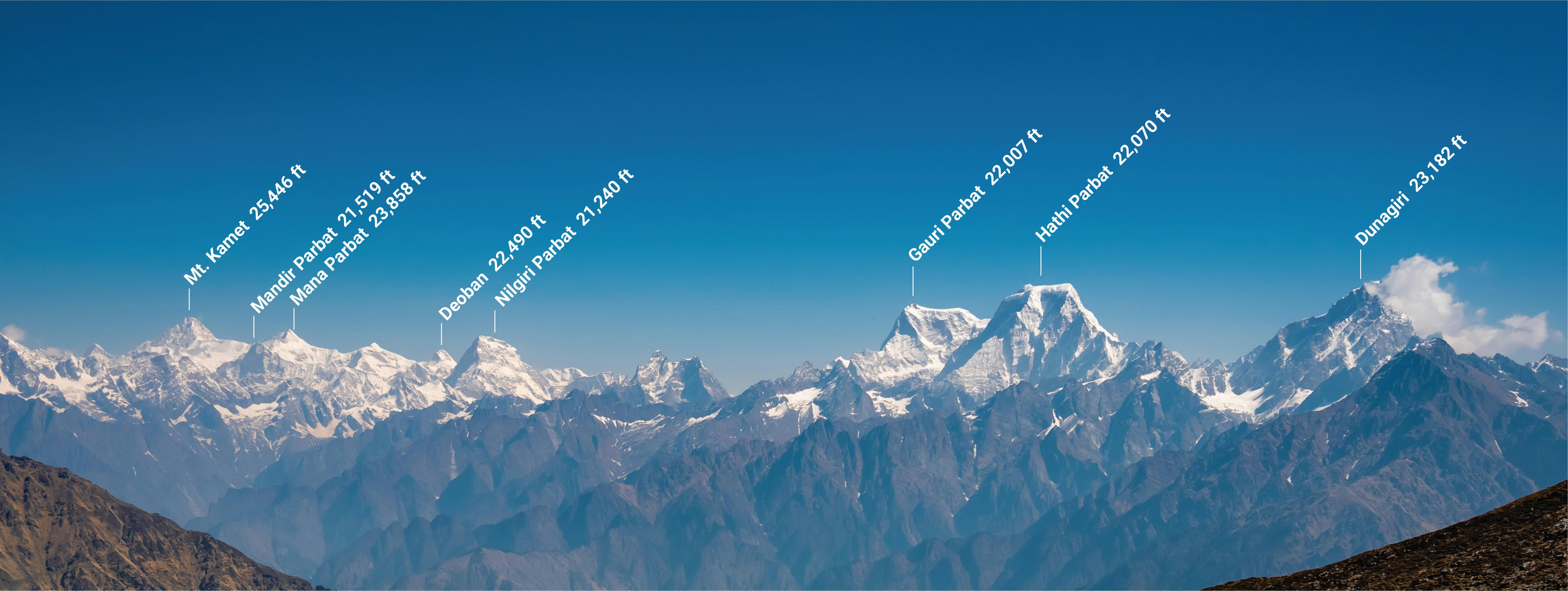
FAQs – Is Kuari Pass Trek Difficult?
1. How difficult is the Kuari Pass Trek for beginners?
The Kuari Pass trek difficulty is moderate, making it suitable for beginners with a basic level of fitness and some prior trekking experience.
2. What makes Kuari Pass Trek moderately difficult?
The trek involves gradual ascents, uneven terrain, and occasional slippery trails, which require stamina and proper trekking shoes.
3. How long is the trek, and does distance affect difficulty?
The Kuari Pass trek distance is around 12–14 km one way, which is manageable for most trekkers with proper pacing and rest.
4. Can seniors or children attempt the trek?
Yes, seniors and children above 10 years can attempt it, provided they are physically active and follow safety guidelines.
5. Does weather impact the Kuari Pass Trek difficulty?
Yes, rain, snow, or icy trails can increase the difficulty. Planning in best seasons (April–June, September–November) makes the trek easier.
6. Are guides recommended for first-time trekkers?
Absolutely. Experienced guides help navigate tricky sections, ensure safety, and manage the moderate trek difficulty.
7. How physically fit should I be for Kuari Pass?
Basic fitness is sufficient. Daily walking, cardio, and leg-strength exercises before the trek can make it easier and enjoyable.
8. What gear helps manage the trek difficulty?
Proper trekking shoes, walking sticks, layered clothing, and gloves help handle rough trails and changing weather conditions.
9. How long does it take to complete the trek?
The trek usually takes 4–5 days, including acclimatization and rest, which helps manage physical strain.
10. Is the Kuari Pass trek dangerous?
It is safe when following guidance, using proper gear, and respecting trail conditions. Most challenges are due to weather and altitude, not extreme difficulty.
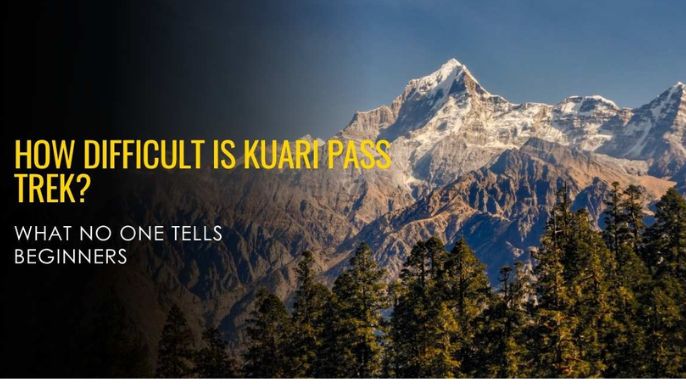

.jpg)
